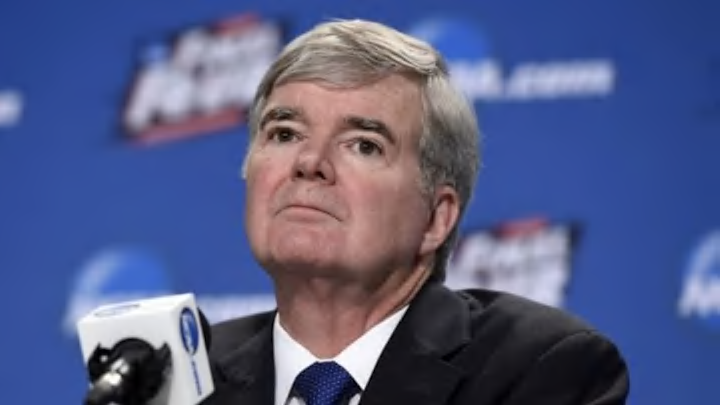On January 13, the NCAA Division I Council voted to accept a proposal which among other changes, pushed back the date on which men’s basketball players have to remove themselves from the draft pool of the National Basketball Association in order to maintain their eligibility.
While these changes are more sensible than the previous standards, the NCAA has still missed the best and obvious solution because of its ridiculous adherence to a skewed ideology of “amateurism.”
The date is now 10 days after the NBA Draft Combine concludes. Players can participate in the combine and try out with one NBA team per year without affecting their NCAA eligibility. They are also allotted extra instruction time in preparation for these events.
First off, the number of student-athletes actually affected by any eligibility standard when it comes to the NBA Draft is minimal. The vast, large, huge, majority (I can’t stress enough how much of a majority this is. It’s essentially about 99 percent.) of NCAA men’s basketball players simply aren’t skilled enough to play in the NBA. Only a very select few even get an invitation to the NBA Draft Combine.
More from Dear Old Gold
- Bet $1, Win $365 GUARANTEED Backing Hawkeyes with Bet365 Iowa Promo!
- How Fans Can Get an Official Jersey from Fanatics This Week!
- Bet365 Iowa Promo: Bet $1 on Hawkeyes vs. Cyclones, Win $200 Bonus GUARANTEED!
- Caesars + BetMGM Iowa Promos: Win $250 GUARANTEED + Back Hawkeyes With $1,500 No-Sweat Bet!
- DraftKings + FanDuel Iowa Promos: $400 Bonus for Iowa vs Utah State Week 1
Another important fact in this situation is the fact that participants in the NBA Draft Combine are not paid to do so, nor are they paid to try out, nor are they paid if/when their names are called on Draft Day. It’s easy to argue that these events, even though they are held in the interest of potentially paying a player in the future, shouldn’t affect amateurism because no compensation is offered or given.
The biggest problem created by a cut-off date still remains despite this attempt at fixing it.
As a hypothetical situation, let’s imagine that Timmy Basketball is on the fence about declaring for the NBA Draft. He was one of the top freshman players in the college ranks, but whether or not he will be able to start and maintain a professional basketball career is up in the air. Timmy can now actually work out for an NBA team, and participate in the combine.
As a result, Timmy discovers that his prospects of being drafted are about 50/50. Timmy mulls it over until the last possible second, then decides to declare for the NBA Draft, forever forfeiting his NCAA eligibility. Draft day comes, and Timmy’s phone never rings.
Who are the biggest losers in this situation, besides Timmy himself of course? The school Timmy played for, the conference Timmy’s former school is in, and NCAA men’s basketball as a whole. Having more fringe-professional-level players only enhances the talent level of the NCAA game. Because of this rule, Timmy will probably end up dominating the NAIA instead of playing his sophomore and perhaps further seasons in the NCAA.
With all these things considered, the best and obvious solution to these issues is for the NCAA to simply not have a cut-off date for men’s basketball players to make a decision for the NBA.
The number of players who will face such a decision is miniscule. Players taken in the draft don’t receive a penny of compensation from any NBA team until an actual contract is signed, which could be argued is less compensation than some players may get in violation of NCAA rules from boosters and other sources.
Finally, allowing players to return to their schools, even after having gone through the entire draft process, maximizes the chances of the NCAA game retaining its best players.
It’s so simple, but the sacred cow of “amateurism” continues to make the best and obvious answers impossible for the NCAA to adopt.
